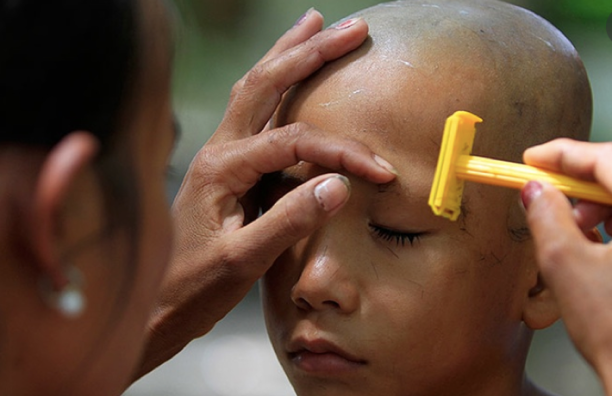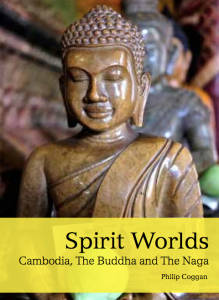
Pinterest, Keith Pings.
For its first three or four years the child is surrounded by indulgence and immediate fulfilment, but the world becomes harsher with the birth of each younger sibling. The transition from infancy to childhood is not sudden, however, but a gradual increase in responsibility and socialisation. During this time also the father gradually turns into remote and authoritarian figure.
The basic lessons children learn are respect, obedience, and conformity, and by the time the child begins school it will have learned such basics as respect for elders and monks. Children’s games emphasise skill and cooperation rather than winning, and the child’s performance of its duties within the family – household chores for the girls, looking after animals and supervised farm work for the boys – attracts no praise or reward, although failure or incompetence will attract blame and scolding. The parents’ control over their children is absolute, and children do not conceive of themselves as autonomous beings.

“In ancient times, Khmer people usually shaved their children’s heads. … This tradition is called “Kaur Chouk,” which means “to shave the tufts of hair away when the child is old enough.” Copyright S. Phana
A village tradition – one rapidly dying out but not yet dead – is that a child’s head should be shaved except for a forelock. The ritual cutting of this forelock at some point between the ages of seven and eleven, in a ceremony involving the monks, an achar (expert in ritual), and the family, marked the passage to responsible late childhood.
For girls, this was traditionally followed by “entering the shade,” a period ranging from a few days to a few months during which she remained inside the house, avoiding all contact with men and boys, practicing household duties and studying feminine etiquette. There was no ritual for the entry into the shade, but the exit was marked by a ceremony in which, among other things, a man with a branch would announce himself to be an “arak (spirit) of the forest,” the achar would ask the arak not to harm the girl or to keep her pralung (soul) in the forest, and the arak would promise that the girl would be allowed to have children. The entry into the shade is rarely practiced today.
For boys, the end of childhood is marked by collective ceremony of entray in to Buddhist novitiate at about twelve years old. For a brief moment before the ordination the pralung of a naga enters the boy, and he’s referred to as a naga until the full ordination is complete. During his time as a serpent he wears a traditional female garment (the hul) decorated with scales and is made beautified with make-up, gold necklaces and earrings, bracelets and rings. Possibly this is meant to represent the costume of Prince Siddhartha as he renounced the palace, but there are also clear undertones of the naga princess who married Preah Thong, the founder of the Khmer race.

A boy gets his head shaved by his mother during an ordination ceremony. Kork Banteay village, Kandal province. Copyright Heng Sinith/AP
*
Boys and girls rarely interact after the age of puberty. A major exception is the Khmer New Year, when mixed groups of adolescents join to play traditional games, but in general, contact between sexes in the village setting is very limited. Life for teenagers in the city is, of course, a different matter.

